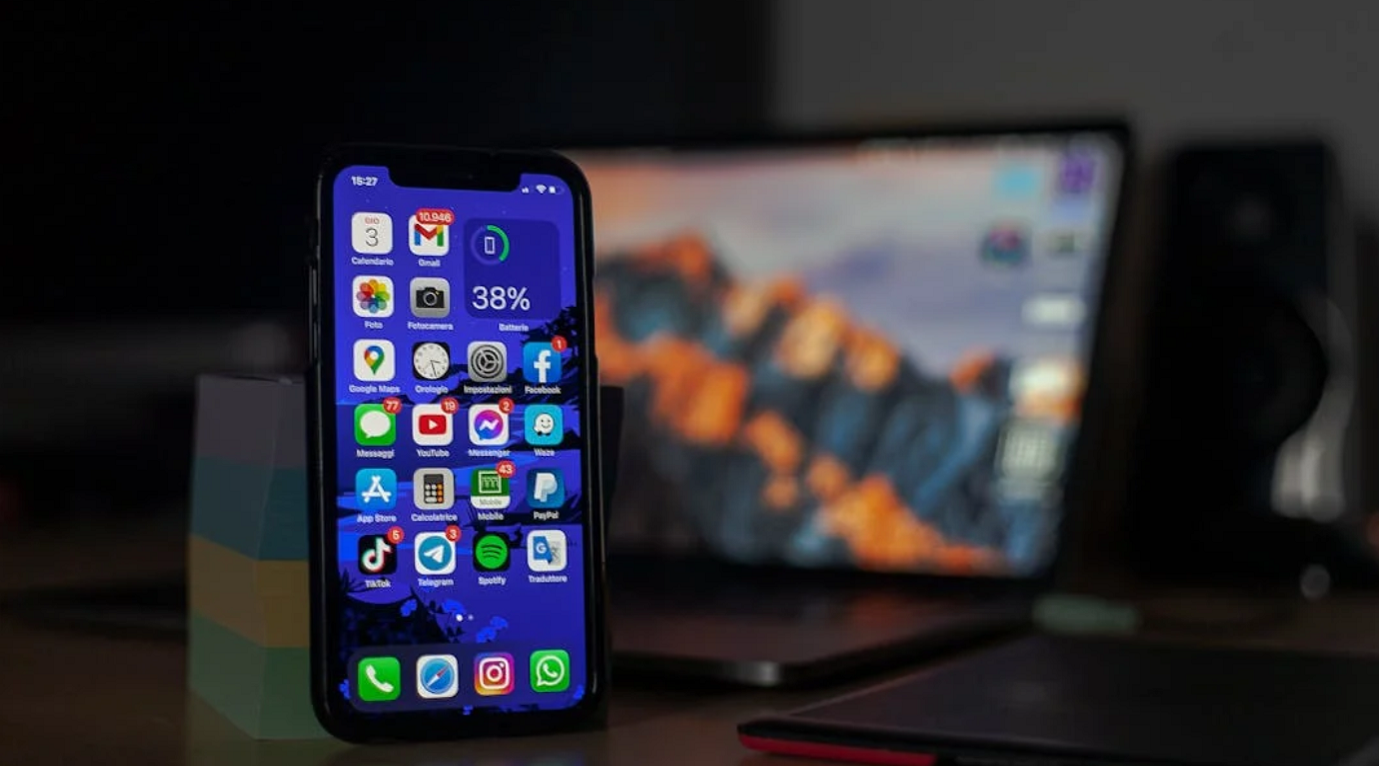A Brief History of the iPhone: The Catalyst for iOS
The story of iOS software begins with the launch of the original iPhone in June 2007. Steve Jobs introduced it as a device combining “an iPod, a phone, and an internet communicator.” The iPhone was a game-changer, setting new standards for smartphones with its multi-touch interface and lack of a physical keyboard.
Early Milestones in iPhone History:
- 2007 – The Original iPhone: Ran the first version of iOS, known simply as “iPhone OS,” featuring basic apps like Safari, Mail, and iPod.
- 2008 – iPhone 3G and the App Store: The introduction of the App Store in July 2008 transformed the iPhone into a versatile device, enabling third-party developers to create apps. Today, the App Store boasts over 2 million apps, catering to diverse user needs.
- 2010 – iPhone 4 and Retina Display: Apple rebranded its operating system to iOS with the launch of iPhone 4, focusing on enhanced visuals and multitasking.
- 2017 – iPhone X and Face ID: Marking the iPhone’s 10th anniversary, the iPhone X introduced Face ID and a bezel-less OLED display, reflecting Apple’s commitment to innovation.
The iPhone has now sold over 2.3 billion units globally, making it one of the most successful consumer products in history. iOS has evolved alongside it, offering features tailored to each device’s hardware capabilities.
Understanding iOS Software
At its core, iOS software is a Unix-based mobile operating system optimized for Apple’s devices. Its hallmark is the seamless integration of hardware and software, creating a user experience that is smooth, reliable, and secure.
Key Features of iOS Software:
- App Store Ecosystem: A carefully curated marketplace ensures quality, security, and diversity in apps.
- iCloud Integration: Enables seamless data syncing across devices, from photos to documents and backups.
- Privacy and Security: With features like end-to-end encryption, app tracking transparency, and Face ID, iOS sets the gold standard for mobile security.
- Accessibility Features: Tools like VoiceOver and AssistiveTouch ensure that iOS is inclusive, catering to users with diverse needs.
- Regular Updates: Apple releases updates across devices simultaneously, ensuring uniformity and immediate access to the latest features.
Evolution of iOS Versions
Each iteration of iOS has introduced features that redefine user expectations and push technological boundaries. Here’s an updated overview of key milestones:
iOS 1 (2007): Where It All Began
The original iOS, then known as iPhone OS, was revolutionary, offering multi-touch gestures, a web browser (Safari), and pre-installed apps like Maps and Weather. While limited by today’s standards, it set the foundation for modern smartphones.
iOS 4 (2010): The Birth of Multitasking
This update introduced background tasking, folders for organizing apps, and FaceTime for video calls. The ability to switch between apps marked a turning point in usability.
iOS 7 (2013): A Visual Overhaul
Apple introduced a minimalist design with flat icons and translucent effects. Control Center debuted, giving users quick access to essential settings.
iOS 11 (2017): Augmented Reality Takes the Stage
With ARKit, Apple brought augmented reality to millions of devices, enabling apps to overlay digital content onto the real world.
iOS 16 (2022): Lock Screen Customization
For the first time, users could personalize their lock screens with widgets, fonts, and wallpapers, enhancing user control.
iOS 18 (2024): Personalization and AI Integration
Released in September 2024, iOS 18 offers new ways to personalize the iPhone with deeper customization to the Home Screen and Control Center, the biggest-ever redesign to Photos, and the introduction of Apple Intelligence.
Each version of iOS builds upon its predecessors, continually enhancing the user experience and setting new standards in mobile technology.
Fun Fact: Over 70% of Apple devices adopt the latest iOS version within months of release, a testament to Apple’s robust update cycle.
Looking to Redefine What’s Possible with iOS?
Collaborate with Neuronimbus to craft exceptional apps that captivate users and elevate your business.
Schedule a Consultation
What’s Next for iOS?
The future of iOS software promises transformative advancements in AI, augmented reality (AR), and sustainability. Apple is integrating AI-driven personalization, like smarter Siri suggestions and advanced machine learning features, to create a seamless, proactive user experience. AR capabilities, already robust with ARKit, are expected to evolve further with tools like Vision Pro, enabling real-time spatial mapping and immersive interactions.
Additionally, Apple’s commitment to becoming carbon-neutral by 2030 ensures future iOS updates will prioritize energy efficiency and sustainability. With these developments, iOS will continue redefining how users interact with technology, paving the way for a more connected, intelligent future.
iOS’s Impact Across Markets Like Australia
iOS has a profound impact on markets worldwide, including tech-savvy regions like Australia. Here’s how it resonates:
- High Smartphone Penetration: With 19.86 million smartphone users in Australia, iOS consistently holds a significant market share due to its premium positioning and loyal user base.
- Thriving App Development: The Australian app development industry is booming, with startups and enterprises leveraging iOS to build innovative apps tailored to local needs, such as sustainability or outdoor fitness.
- Focus on Privacy: Australians, like global users, value privacy, making iOS’s robust security features a major selling point.
Challenges and Criticisms of iOS
While iOS is widely acclaimed, it’s not without its challenges:
- High Device Costs: Apple devices are often priced higher than competitors, making them less accessible for some users.
- Closed Ecosystem: iOS limits customization and app distribution to the App Store, which some developers find restrictive.
- Fragmentation in Older Devices: While updates are widely adopted, older devices may struggle to support new features, limiting their utility.
Conclusion: A Legacy of Innovation
iOS software is more than an operating system; it’s a cornerstone of modern technology. Its emphasis on innovation, privacy, and seamless integration has set benchmarks for mobile operating systems worldwide. From its inception alongside the iPhone to its current status as a leader in AR and AI, iOS continues to shape how we interact with our devices.
Whether you’re a business looking to develop an app or a tech enthusiast exploring possibilities, understanding iOS’s evolution is key to leveraging its potential. At Neuronimbus, we specialize in creating iOS applications that resonate with global audiences, including tech-forward markets like Australia. Let’s collaborate to bring your vision to life in the Apple ecosystem.




